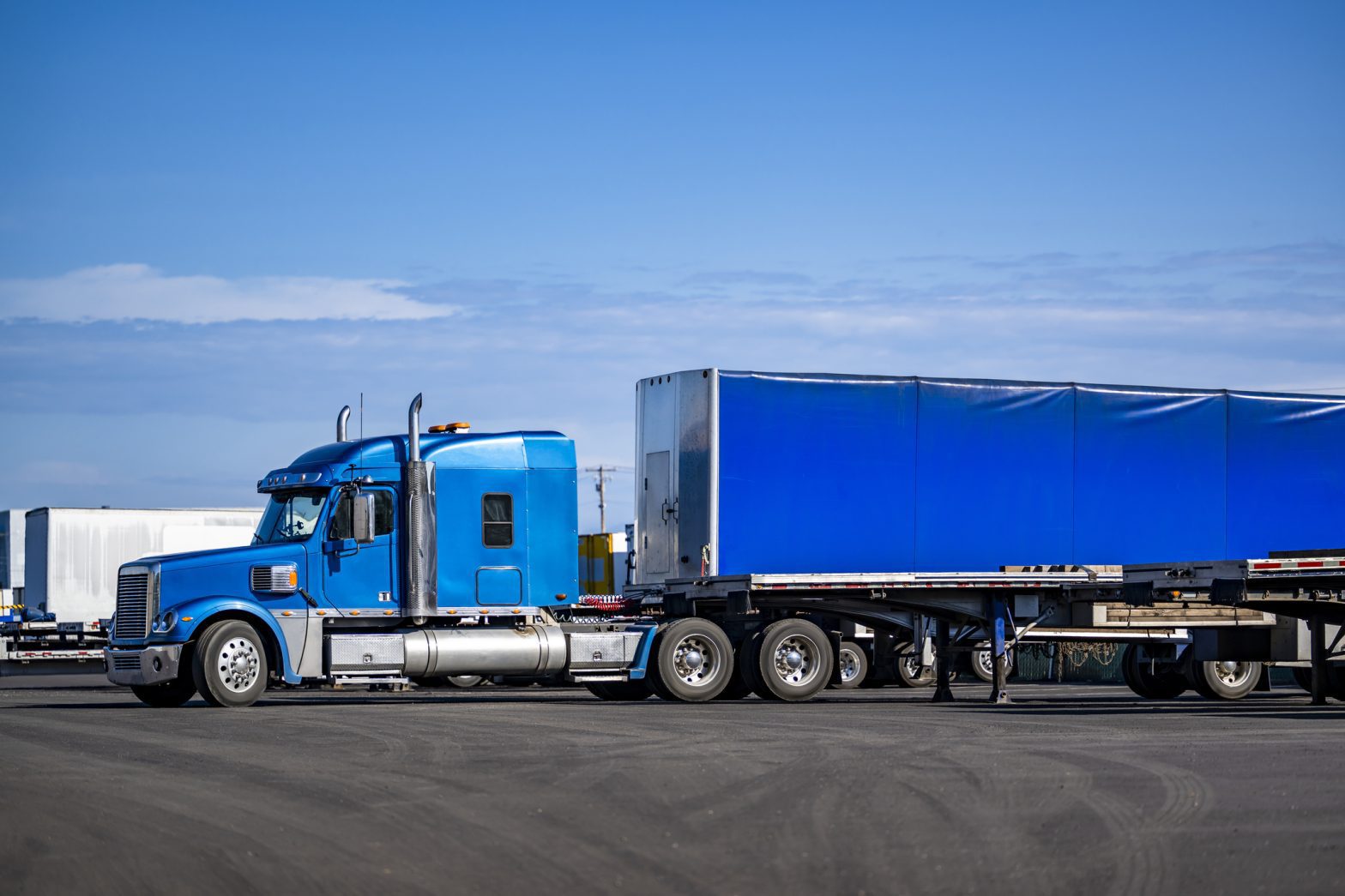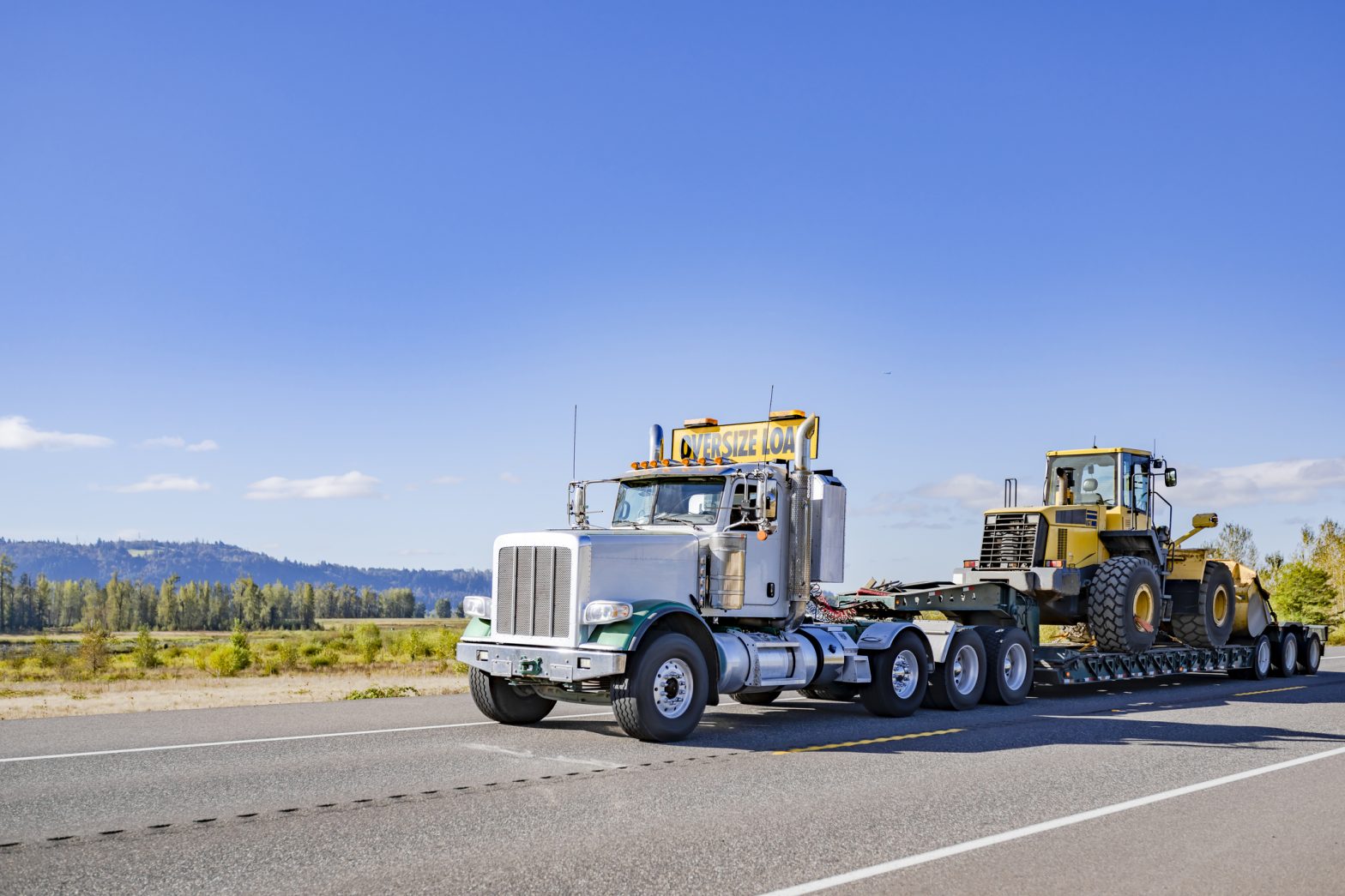
 July 9, 2024
July 9, 2024
Canada to Mexico: Moving a Complete Production Line
A Tier 1 automotive supplier asked us to move their entire production line, consisting of over 160,000 pounds, from Canada to Mexico. With 2 weeks of planning and preparations, we moved their production line in a convoy of 5 trucks smoothly across North America in just 10 days. Here’s the breakdown of how we did it.
Drawing from expertise: Crafting a tailored solution
Preparations for an efficient route
To start we had to find the right trucks and trailers for the loads being transported. Based on the different equipment being moved, we sourced two rolltites, a double drop with a mini-deck, a step deck, and a dry van. We then worked with the shipper and riggers to inspect the product dims and make adjustments based on the height, width, and weight of the pieces to minimize the equipment required and ensure the safest shipping process. By coordinating with the riggers we booked all the necessary materials and aligned our schedules to avoid extra costs for any of the riggers’ wasted time.
When it comes to shipping oversized or overweight loads, many complexities must be accounted for. Our goal is always to choose the most time and cost-effective route, keeping potential restrictions in mind. In this case, we had to be cognizant that moving a superload or freight surpassing a certain weight or size limit meant that the drivers had to use specific roads and could only drive during certain hours. So we spent time carefully planning a precise route for a smooth trip.
Saving transit time
Additionally, we used real-time tracking to guarantee that the load was staying en route and making good progress. Our consistent tracking allowed us to be on top of any unexpected issues or obstacles so they could be efficiently handled without additional work for our customer.
There is a lot of documentation required for crossing the border that must be accurate and prepared in a timely fashion. For this load, we provided the shipper with the information needed to correctly create this paperwork. To move the load from Canada to Mexico, we bonded it through the United States, which also required that we create the necessary documents and get them approved before the load arrived at the Mexican border. We made sure that the load proceeded quickly, as when bonding through the USA, it is imperative that deadlines are met, or else heavy fines or legal penalties could be incurred.
We coordinated in advance to secure permits for Canada and USA transit, arranged USA/Mexico border drayage permits, and organized the convoy for crossing. Additionally, we decided to forgo trans-loading even at the borders to mitigate damage and decrease transit time.
Before the truck reached its destination, we made sure the Mexican plant was ready to receive the load. We communicated with the Mexican customs broker to ensure they had the required information to secure the pedimento. Then we directly contacted the Mexican plant to guarantee all the necessary materials were prepared while coordinating with the riggers to make way for an effortless unloading process that considered safety, time, and costs.
Postcrossing, we confirmed the details and obtained permits for Mexico transit. Based on the areas the truck was driving through, we arranged for an escort to follow the load to either comply with oversized trucking laws or for freight safety.
Simplifying the transportation process
Transporting goods from Canada to Mexico can be challenging, but with the right partners, it can feel easy. A knowledgeable logistics partner ensures a smooth transportation process, especially when crossing multiple borders. Here’s a checklist to keep in mind when moving overweight freight across North American borders.
- Source the appropriate equipment to transport your goods.
- Communicate with riggers when planning the pickup to ensure proper coordination.
- Carefully plan routes, taking time of day, weight, and height restrictions into account.
- Order necessary permits, and ensure documents, and paperwork have been prepared.
- Keep constant communication with all involved parties to avoid extra fees and costly delays.
At First Frontier Logistics, we’ve worked with multiple customers to ship regular, overweight, and oversized truckloads from Canada to Mexico while maintaining strict deadlines and complying with cross-border regulations and protocols. Contact us today to learn how we can help your business.








